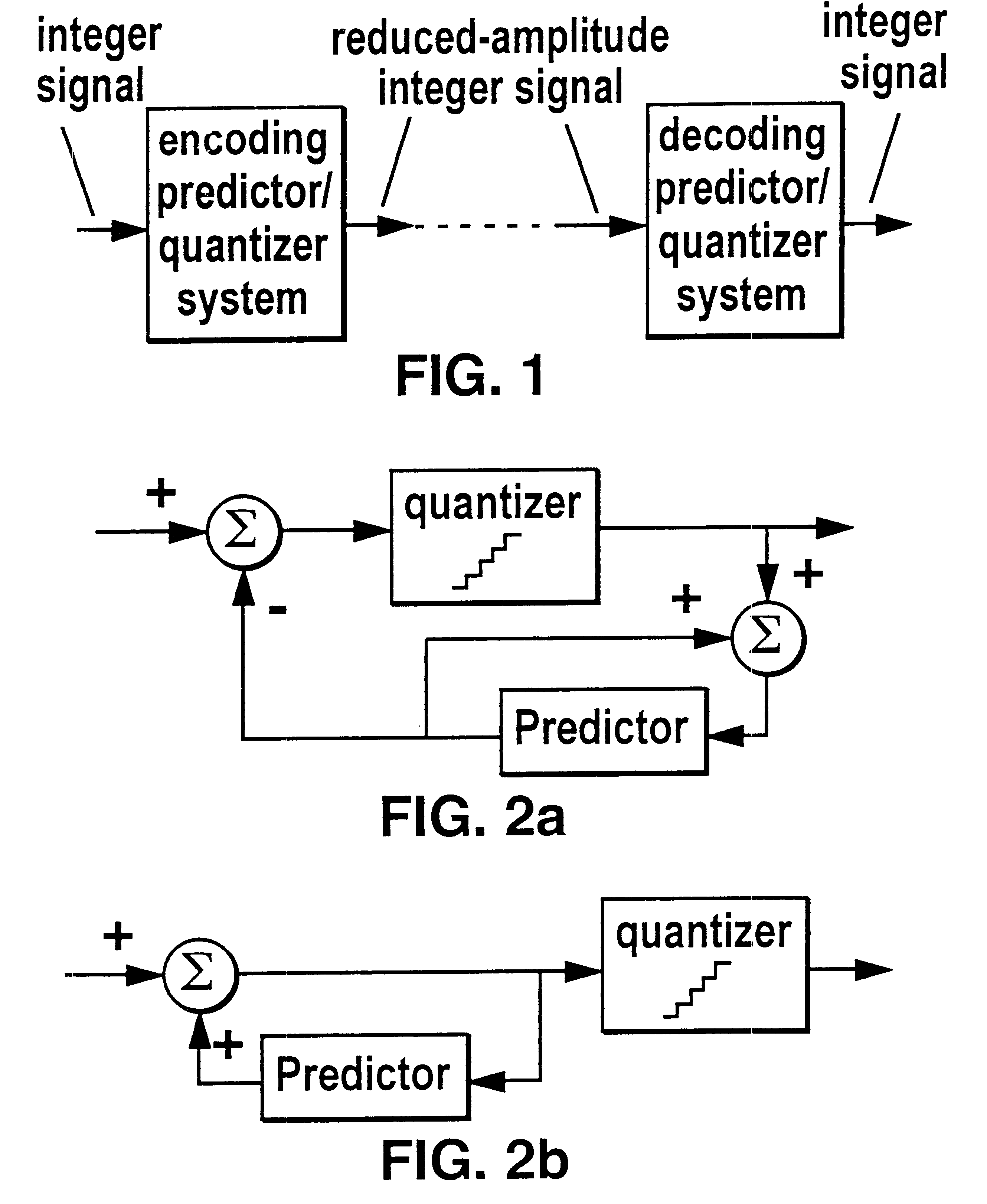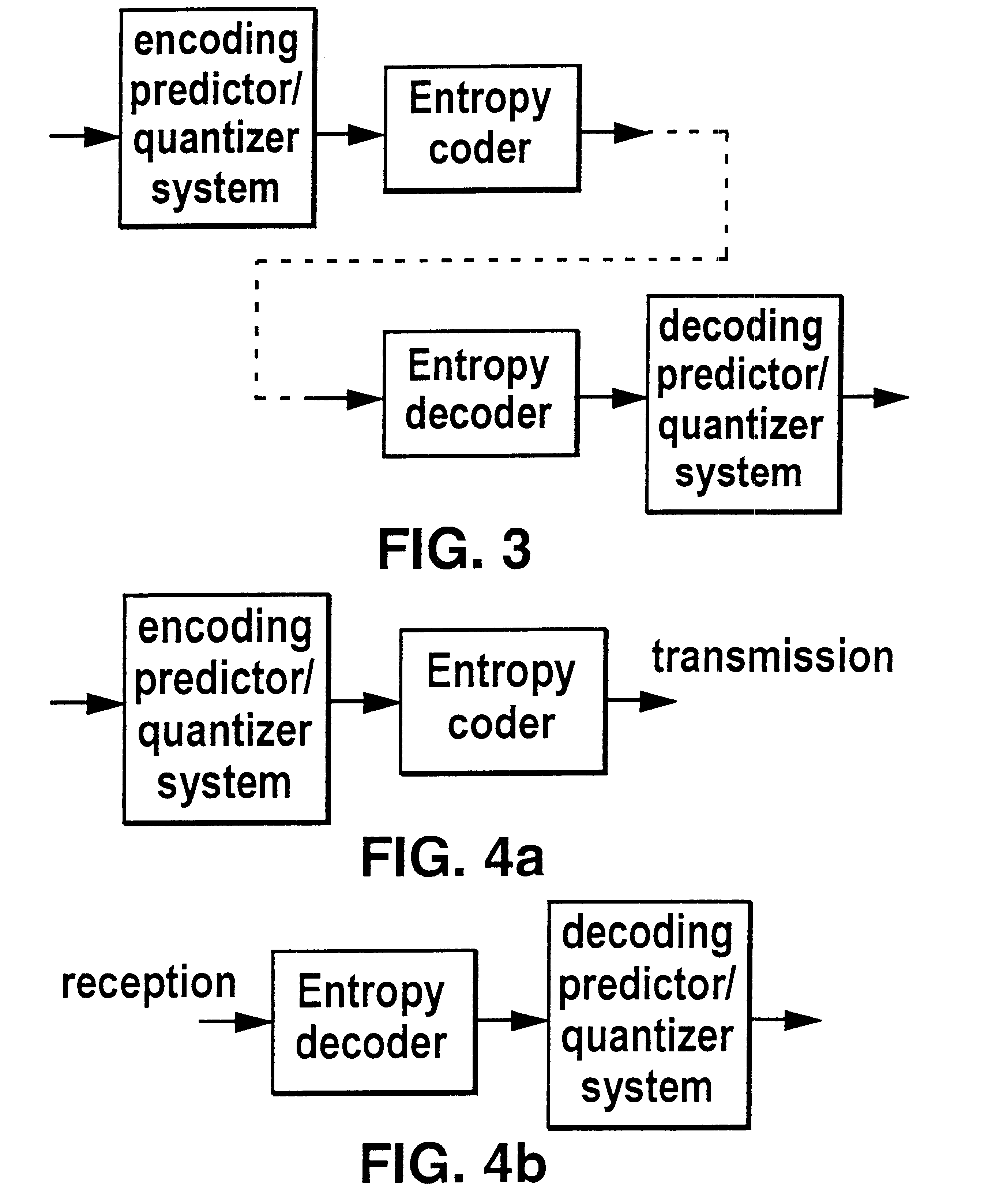Lossless coding method for waveform data
a lossless coding and waveform data technology, applied in the field of lossless coding methods for waveform data, can solve the problems of insufficient playback time of data rates occupied by audio or other waveform data in digital pcm (pulse code modulation) form, difficulty in conveying data rates of around 11.5 mbit/second with adequate playback through existing storage media such as high-density compact discs or optical storage media, etc., to preserve the integrity of quiet passages
- Summary
- Abstract
- Description
- Claims
- Application Information
AI Technical Summary
Benefits of technology
Problems solved by technology
Method used
Image
Examples
Embodiment Construction
The invention may be implemented by feeding waveform data in digital PCM form into digital signal processing chips, typical current examples of which are the Motorola DSP 56000 or DSP 96000 family or the Texas Instruments TMS 320 family, and the encoding and decoding algorithms may be implemented in the form of code designed to run on the chip and stored in program memory on or associated with the chip. Alternatively, in computer based applications, the waveform signal in PCM and encoded forms may be handled as digital data in the computer and its associated memory, and the encoding and decoding algorithms implemented in the form of program code for the computer in ways well known to those skilled in the art. In applications requiring the production of large numbers of cheap encoders and decoders, the signal processing chips used may be optimised for the algorithms used to produce dedicated chips for this specific application.
Waveform signals will usually originate either from an or...
PUM
 Login to View More
Login to View More Abstract
Description
Claims
Application Information
 Login to View More
Login to View More - R&D
- Intellectual Property
- Life Sciences
- Materials
- Tech Scout
- Unparalleled Data Quality
- Higher Quality Content
- 60% Fewer Hallucinations
Browse by: Latest US Patents, China's latest patents, Technical Efficacy Thesaurus, Application Domain, Technology Topic, Popular Technical Reports.
© 2025 PatSnap. All rights reserved.Legal|Privacy policy|Modern Slavery Act Transparency Statement|Sitemap|About US| Contact US: help@patsnap.com



